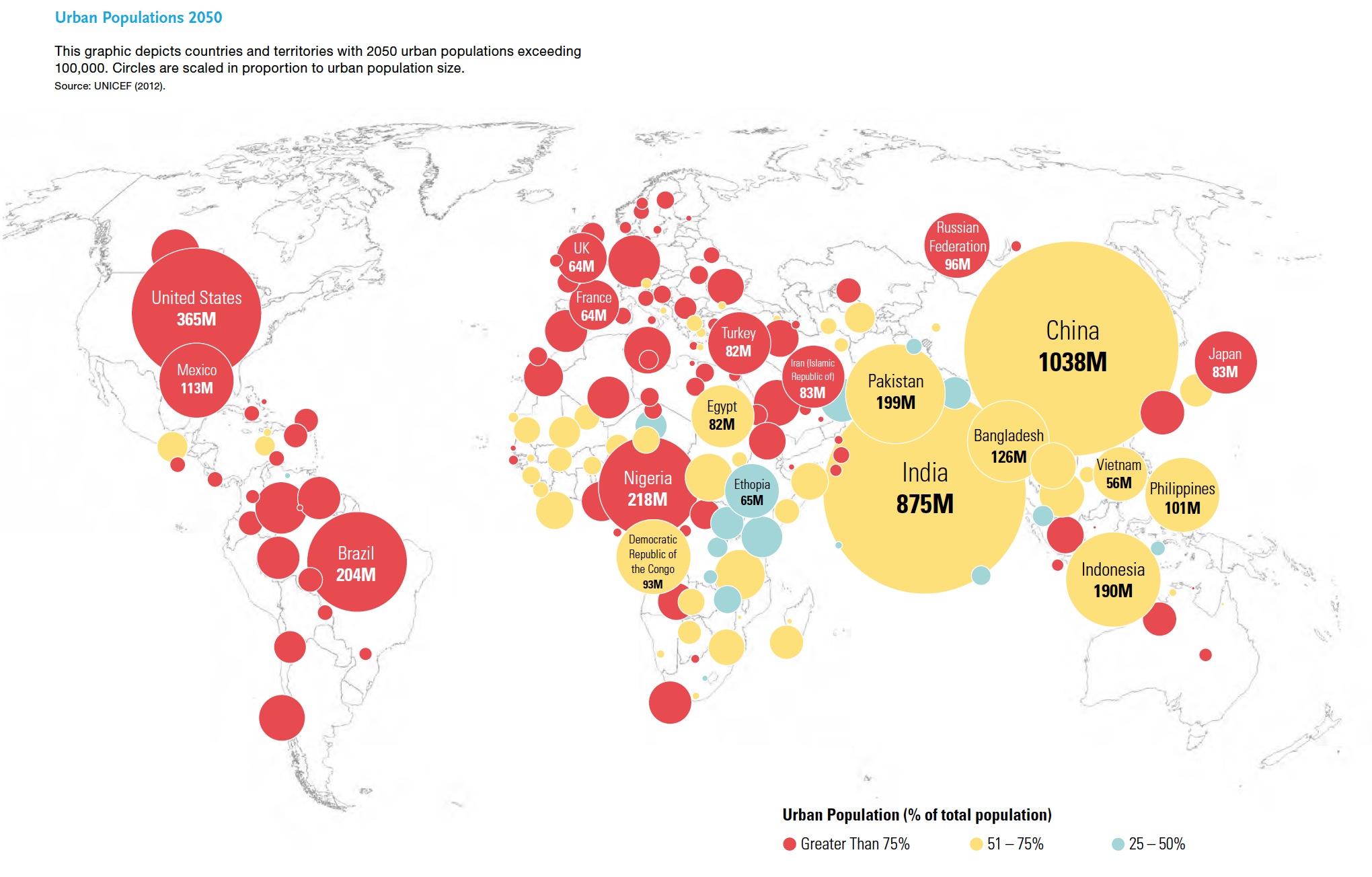ARUP
Introduction
If we look backwards as far as we’re looking forwards, to the late 1970s, most of the advances we now enjoy in railways (not to mention in information communications technology) would have been unthinkable. In an age of rapid economic, political, social, environmental and technological changes, exercises in strategic foresight are not intended to predict the future with complete accuracy. Rather, the idea is to explore possible futures based on current trends and trajectories as well as weak signals.
Looking ahead to 2050 requires us to think in conceptual terms in the hope of pushing the boundaries of creative thinking. The rail industry is often thought of as conservative; however there is a need to proceed with foresight, to embrace creative thinking beyond projecting the present into the future.
This thought-piece focuses on the passenger and user experience. The journeys imagined here are intended to generate a conversation about the future and provide the big picture context for future planning and decision-making by the rail industry and by governments. They are also intended to set out a forward-looking and inspiring vision for rail. With the increasing pace of technological change, perhaps the more imaginative scenarios will come to fruition. The case studies indicate trends taking place in rail. They are early signs of possible directional change, and reveal directions in which the future could be heading. Whether these become more widely implemented remains to be seen.
While the specifics may be difficult to forecast, a number of macro-drivers will shape the world in which rail operates. These megatrends will have far-reaching implications for transport in general and rail in particular, and provide the context in which the railways of the future will operate. They will present challenges, but are also likely to spur innovation to meet these challenges.
Advances in technology, for instance, will have wide-ranging and unknown impacts. But we can reasonably expect some major advances in how railways operate: more driverless trains, realtime monitoring of rolling stock and infrastructure, improved accuracy of passenger information, predictive maintenance planning, and most importantly, seamless journeys integrating with other modes of transport.
To move forward with innovation, it is vital that decisions are made, not solely on past experiences, but also on future possibilities and preferred outcomes. The future of rail is something that will be created, not entered into. So to achieve the desired vision for rail, those in the rail industry and government should be asking themselves: if this is the role we want rail to play, how do we ensure things are in place for this to happen?
Megatrends
Megatrends are the game-changing forces that will shape the world in the future. As drivers of change, these are far-reaching, sustained and relatively certain. These macro forces will present both challenges and opportunities as they transform the way society and markets function. The megatrends described below will have global impacts in terms of mobility and transport infrastructure.
Megacities
By 2050, around 75% of the world’s population will live in cities. It is estimated that the global urban population is growing at two people per second, adding 172,800 new city-dwellers each day. A megacity may be a single metropolitan area or two or more metropolitan areas that converge to form mega-regions. These mega-regions may stretch hundreds of kilometres and be home to more than 100 million people. Examples include the Boston-New York-Washington corridor, the São Paulo-Rio de Janeiro region, or the Hong Kong-Shenhzen-Guangzhou area of China which is home to more than 120 million people.
Megacities are increasing in number and size and most of these are located in emerging markets. Four of the world’s existing 24 megacities (cities with populations of over 10 million people) are in China — by 2025 there will be three more, some of the fastest urban expansion in history. Chinese planners hope to merge nine cities in the Pearl River Delta — from Guangzhou to Shenzhen — to create a 26,000 square kilometre urban area that will be 26 times larger than Greater London. Over the next six years, £190bn will be spent integrating transport, energy, water and telecommunications networks.
The increasing pace of urbanisation will place added stress on already straining city systems and infrastructure, requiring urban areas to be far more efficient. But denser urban areas could also provide opportunities for forms of transport, such as rail, that rely on density to function efficiently.
The growth of these megacities will also lead to unprecedented urban sprawl, new slums and a growing gap between the rich and poor. This is a global trend with the richest 1% of people now owning nearly half of all of the wealth on the planet. Currently about 1 billion people live in slums, and the vast majority of these slums — more than 90% — are located in cities of developing countries. By 2050 the slum population could multiply to 3 billion.
Download full version (PDF): Future of Rail 2050
About Arup
www.arup.com
Founded in 1946 with an initial focus on structural engineering, Arup first came to the world’s attention with the structural design of the Sydney Opera House, followed by its work on the Centre Pompidou in Paris. Arup has since grown into a truly multidisciplinary organisation. Most recently, its work for the 2008 Olympics in Beijing has reaffirmed its reputation for delivering innovative and sustainable designs that reinvent the built environment.
Tags: Arup, China, HSR, India, Population Growth







 RSS Feed
RSS Feed